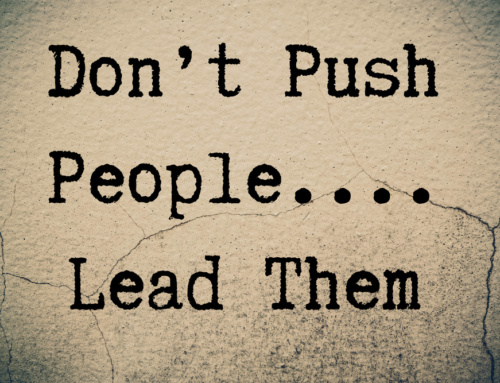A coaching client—the CEO of a successful software firm—was struggling to help his firm navigate a critical transition to a new strategy. He was forcing his actions, leading by command, and generating stress and strife in his wake. After listening to the comments of his colleagues and then sharing this input with him, he went quiet for a few minutes and then sighed, and offered: “This situation is critical for our firm. I fear that if we fail, the lights will dim on what should be a bright future. I feel like it is my responsibility to bring this new strategy to life, and I am failing.”
He made my job as a coach easy, because internally, he understood that he was the cause of the problem. Like an athlete on a bad day, he was off his game—his actions were disjointed and his mental game was a wreck. After challenging him to reassess his role and ask his team members how he could best help and support them with the strategic transition, he relaxed, focused on purpose and regained his leadership flow.
Too often in the world of leadership development and coaching, we preoccupy on the visible manifestation of leadership—the gestures, actions, styles and habits—when the real work of leadership is forged in our minds, invisible to all but the lone individual waging war against self-doubt or other insidious dark forces.
I call this the “Inner Game of Leading,” in tribute to Timothy Gallwey’s fabulous 1970’s era book: “The Inner Game of Tennis: The Classic Guide to the Mental Side of Peak Performance.” (While tennis is a vehicle, the book is an extraordinary guide to succeeding with the challenges found between your ears.) This book was an early influence on me as I worked to overcome my mediocre—on a good day—serve and my spotty, temperamental backhand. Later on, it served as a guide for keeping my ego in check and learning not to defeat myself on the leadership court.
Yes, in our training courses and programs and books and blogs, we spend most of our time focusing on the motor skills of leadership and not enough—and in many cases, not at all—on the inner game so essential to leading effectively. That’s too bad, because success goes to those who get the inner game working—creating flow and eliminating spotty behaviors and unforced errors.
If you’ve not asked and answered some variation of the following questions recently, it is likely your inner game is out of sync with your leadership actions.
- Why do I lead?
- What is my real purpose?
- What do my team members need from me to help them succeed?
- At the end of this project (relationship), what will my team members say that I did?
The Bottom-Line for Now:
The questions above are simple, yet your answers have a profound impact on how you play the game. Answering them honestly every day and at every encounter and you will mostly avoid hacking your way through your days.
—
Get the latest e-book (free) from Art: “A Bold Cup of Leadership Caffeine: Ideas to Stimulate High Performance.”
—
See posts in the Leadership Caffeine™ series.
—
Read More of Art’s Motivational Writing on Leadership and Management at About.com!
—
Art Petty serves senior executives and management teams as a performance coach and strategy facilitator. Art is a popular keynote speaker focusing on helping professionals and organizations learn to survive and thrive in an era of change. Additionally, Art’s books are widely used in leadership development programs. To learn more or discuss a challenge, contact Art.








[…] Art Petty speaks out on the “inner game of leading,” meaning the mental attitude that drives our behavior. […]
What do my team members need from me to help them succeed? In my experience, this is of critical importance – how I can facilitate team member success, provide the resources they need to achieve the goal.
Why do I lead? Well, sadly, I had some early career experiences with bad leaders – mercurial, inconsistent, high penalty for mistakes following weak guidance. I decided it would be better to be in charge. Well, in charge is only an illusion. I strive everyday to be at least a decent leader and to keep improving on that effort.
One thing I learned early is that something has to be done exactly my way, then I have to do it myself. Better to explain the goal/outcome, negotiate a timeline, mobilize resources, and step back most of the time. I try to keep things that must be done my way to a minimum.
Hi Kelly! Like you, I had some early anti-role models. My focus was to file away their bad habits with the vow to never replicate them when it was my turn. Of course, I developed a few of my own bad habits, but those lousy leaders were great teachers. Love your approach to navigating the “my way” issue. You set a great example versus the “my way or the highway” type manager. Best, -Art